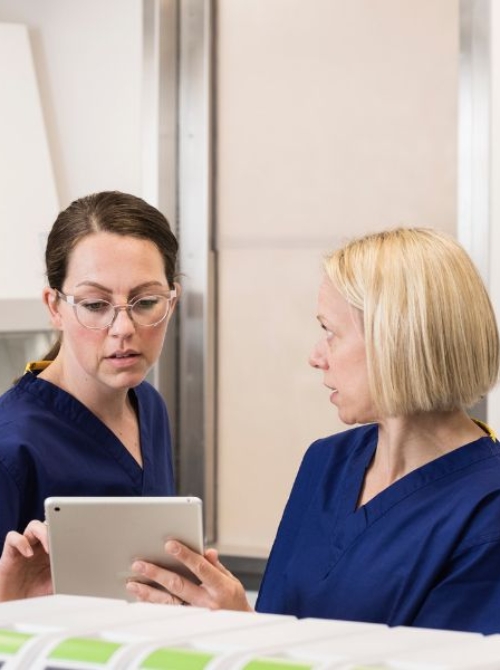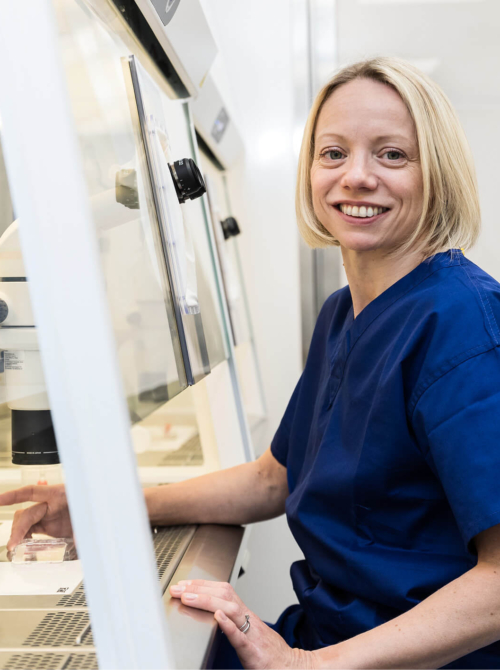Single or multiple embryo transfer, what is safest and most effective?
Choosing between single embryo transfer and multiple embryo transfer is one of the most important decisions in an IVF cycle. It can feel tempting to transfer two embryos to double your chances, but the reality is more complex. The safest and, in many cases, the most effective approach is to aim for one healthy baby at a time. That is why many clinics, including ours, recommend single embryo transfer in most situations.
What do we mean by single versus multiple embryo transfer?
Single embryo transfer means placing one embryo in the womb in a treatment cycle. When a good quality embryo is available and the choice is deliberate, you may hear this called elective single embryo transfer.
Multiple embryo transfer means placing two embryos, and in rare circumstances three, in the same cycle.
In the right circumstances, single embryo transfer can achieve pregnancy and live birth rates that are comparable to transferring two embryos across a treatment pathway, while keeping the risk of twins or triplets far lower.
This is a key reason why the UK regulator, the Human Fertilisation and Embryology Authority, has worked with clinics for many years to reduce multiple birth rates in fertility treatment. Read more about their campaign here.
Why does a multiple pregnancy carry a higher risk for mothers and babies?
Multiple pregnancy is the single biggest health risk of fertility treatment for both patients and babies.
Twins and triplets are more likely to be born early and to require neonatal intensive care. Preterm birth increases risks of breathing problems, feeding difficulties and longer stays in hospital, and it can be linked with longer-term health and developmental challenges.
For mothers, a multiple pregnancy is associated with higher rates of pregnancy-induced hypertension, pre-eclampsia, gestational diabetes, caesarean section and anaemia. Recovery can be harder, and the chance of complications during and after birth is higher.
These are serious considerations, which is why a clinic with an ethical approach to embryo transfer focuses on minimising the chance of multiple pregnancy while maintaining strong IVF success rates.
The impact on the NHS and the ethics behind embryo transfer policy
Multiple births place significant pressure on maternity and neonatal services, including intensive care cots, specialist staff and longer hospital stays. From a public health perspective, helping more families achieve one baby at a time is safer for parents and babies, and it is more sustainable for the NHS.
There is also an ethical dimension. Our responsibility is to recommend the plan that balances safety and success, not the plan that looks most appealing in the short term.
Elective single embryo transfer, when suitable, reflects an ethical, patient-first approach. It reduces predictable risks without taking away the chance to try again, because additional embryos can be transferred in later frozen embryo transfer cycles if needed.
How this translates to your treatment plan
A good clinic begins with a full assessment to understand why you are not conceiving. If we can help you build a family without IVF by addressing a gynaecological cause or by making targeted lifestyle changes, we will always discuss this first.
When IVF is the right step, we will talk openly about the number of embryos to transfer, the stage of transfer and the plan for any remaining embryos.
In almost every single case, especially for younger patients or where there is a high-quality embryo available, we recommend single embryo transfer. This approach keeps you safer and does not reduce your overall chance of success across a full course of treatment. That is because additional tools such as PGT-A and vitrification methods mean high-quality embryos can be safely frozen for later frozen embryo transfer, preserving cumulative live birth potential while avoiding the risks of twins.
Your embryology team will also consider details that influence success, such as embryo quality, blastocyst development, uterine lining, timing and culture conditions. These scientific elements sit alongside your medical history, age and personal preferences, so your plan is tailored to you.
When might two embryos be considered?
There are exceptional circumstances where a clinic will discuss transferring two embryos, for example, in older patients, in certain cases with previous unsuccessful transfers, or where embryo quality is limited.
This decision is never routine. It is made with careful counselling about the additional risks of multiple pregnancy, with consideration of medical history, and with clear documentation that the potential benefits outweigh the risks for that individual.
Even in these situations, the guiding principle remains the same: aim for the safest path to a healthy baby.
When only one embryo has been transferred, but this results in a multiple pregnancy
It’s worth bearing in mind that, like with natural conception, there are rare instances where an embryo divides after implantation and a multiple pregnancy can occur after a single embryo transfer when one embryo splits into two; this is called monozygotic twinning.
The exact trigger is not fully understood; natural biology plays the biggest role, but factors like the stage of transfer and any procedure that thins or opens the outer shell of the embryo may contribute, which is why we minimise non-essential manipulation in the lab.
For a simple walk-through of the biology and what we do to reduce risk, read our guide, How do Multiple Pregnancies Occur in IVF here.
Why a clinic’s multiple birth rate matters
When you compare clinics, most people look at pregnancy rates and live births per embryo transferred. But you should also look closely at a clinic’s multiple birth rate.
A lower multiple birth rate usually reflects an ethical, patient-first strategy that prioritises safety and long-term outcomes, like we do at The Evewell.
The HFEA publishes verified figures in a consistent format, so you can compare like-for-like across the UK with confidence.
At The Evewell, our multiple birth rate is amongst the lowest in the UK, based on HFEA verified data. We are transparent about our outcomes and our approach, and we actively encourage you to check our results on the HFEA website and compare them with any clinic you are considering.
How to check a clinic’s figures on the HFEA website
- Visit the HFEA website and search for the clinic name.
- Open the clinic profile and look for the treatment outcomes section.
- Review live birth rate per embryo transfer; this is the fairest headline measure.
- Review the multiple birth rate, which shows how often treatment resulted in twins or more.
- Make sure you are comparing similar patient groups by age and treatment year, as well as whether results are from fresh or frozen embryo transfer.
- If you are unsure how to interpret the figures, ask the clinic to explain them in plain language.
If you would like personalised advice about single versus multiple embryo transfer, book a consultation. We will review your history, your embryo quality and your goals, then create a plan that balances the best chance of success with the safest path to one healthy baby at a time.





